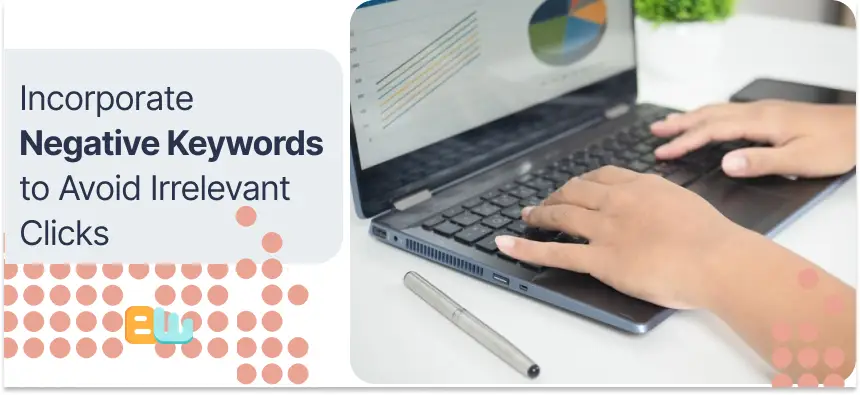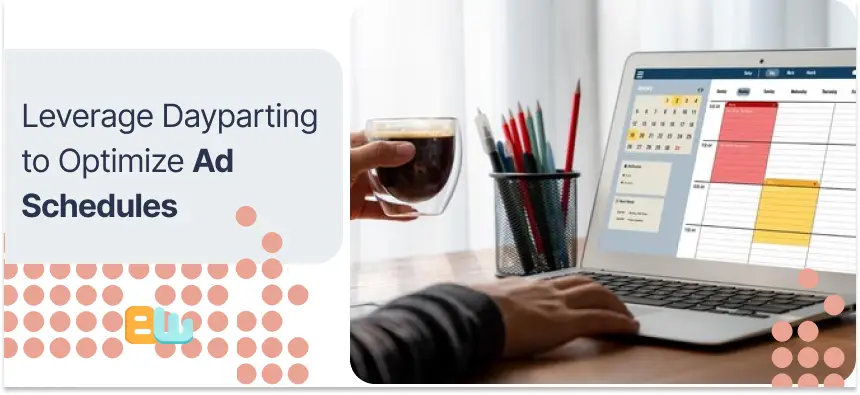
In online advertising, businesses want to lower their CPC and get a better return on their investment. Google Ads is a valuable tool, but it can get expensive if you do not manage it well. The secret to doing well is to find the right balance between cutting ad costs and keeping your ads relevant. This blog post will help you with strategies that work. You will learn how to make your Google Ads campaigns intelligent and effective.
Strategies to Reduce Your Google Ad Costs Effectively

Focus on a few key areas to lower your CPC in Google Ads. Use the right keyword strategy. Improve the quality of your ads. Also, make use of advanced targeting options. All these parts are essential to help you spend less on ads.
Keep in mind that lowering costs should not mean reducing quality. The goal is to improve your campaigns. You should target the right people and show them relevant ads that connect with potential customers.
1. Optimize for Long-Tail Keywords
Long-tail keywords are longer specific phrases that target a particular group of people. Unlike shorter keywords, long-tail keywords usually have fewer searches. This means there is less competition and often lower bids for them.
When you use long-tail keywords in your keyword research, you can bring in better traffic. This traffic comes from users who are closer to making a purchase and are searching for specific products or services. These users are more likely to buy so that you can get a better return on investment with lower bids.
2. Experiment with Different Match Types
Match types decide how well your keywords match what people search for to show your ads. An exact match is the strictest option. On the other hand, a broad game lets you use more variations. Trying out different match types can help you balance reaching more people and staying relevant.
For example, an exact match ensures your ads appear for specific search queries. Meanwhile, phrase match and broad match can help you find new keyword variations and reach more people. By looking at your search terms report, you can see which match types bring in the best traffic and adjust your bids.
3. Incorporate Negative Keywords to Avoid Irrelevant Clicks

Negative keywords help keep your ads from appearing for meaningless searches, even if they have your target keywords. By using negative keywords in your campaigns, you can lower costs. This happens because you decrease clicks from people who are not the right fit for your products.
For example, if you sell “luxury leather handbags” and do not offer discounts, you can add negative keywords like “cheap” or “discount” to your campaign. This will prevent your ads from showing to users looking for budget-friendly items and ensure your ad money goes to a more focused audience.
4. Adjust Your Bidding Strategy for Efficiency
Your bidding strategy can significantly affect your average CPC. Manual bidding gives you control, but you must monitor it and constantly make changes. To make your campaigns easier, consider trying automated bidding strategies from Google Ads, like Target CPA.
Target CPA lets you pick a cost-per-acquisition goal. Google Ads then changes your bids automatically to help you hit that target. This strategy uses machine learning to adjust your bids in real time. It looks at different signals to boost your chances of getting conversions.
5. Focus on Enhancing Your Quality Score

Your Quality Score is important for your ad rank and CPC. A higher quality score shows Google that your ads, keywords, and landing page matter to users and are suitable for their experience. This can help lower ad costs and improve your ad positions.
To boost your Quality Score, focus on ad relevance. Write engaging ad copy that matches your target keywords and landing page content. Make sure your landing page has a smooth experience. It should have helpful information, clear calls to action, and load quickly.
6. Make Your Ads Highly Relevant to Your Target Audience
Creating relevant ads is essential to grabbing the attention of your target audience and getting good clicks. Begin by doing thorough keyword research. This will help you learn the words and phrases that your potential customers are using.
Use these relevant keywords naturally in your ad copy. Make sure it matches the user’s search intent. Show what makes your product or service unique. Use strong calls to action to get people to click.
7. Utilize Geo-Targeting to Reach Your Ideal Customers

Geo-targeting helps you focus your ads on specific areas. This way, your message gets to the right people at the right time. You can better control your ad spending and ensure that your ads appear more in places where your target customers live.
You can save money by not showing ads to the wrong people when you target particular cities, areas, or zip codes. Instead, you aim for those more likely to buy from you. This focused strategy can improve your campaigns and lower ad costs.
8. Test Different Ad Extensions to Improve Click-Through Rates
Ad extensions add more information and actions to your ads. This makes your ads stand out and provides more details. You can make your ads more visible using the right ad extensions. This can increase the chances people will click on them and improve your ad position.
Here are some ad extensions you might want to try:
- Sitelink extensions: These link to specific pages on your website. This gives users quick access to helpful information.
- Call extensions: These show your phone number. They motivate people to call your business directly.
- Location extensions: These make it easy for users to find your business by showing your address and a link to a map.
9. Leverage Dayparting to Optimize Ad Schedules

Dayparting, also called ad scheduling, helps you control when your search ads are shown. By looking at your campaign data, you can find the best days and hours when your target audience is most active.
With dayparting, you can set specific times for your ads to appear and stop them during slow periods. This intelligent plan means your ads are shown to the right people at the right time, which can help you use your budget more effectively and reduce wasted spending.
10. Explore Audience Targeting Options to Narrow Down Your Focus
Audience targeting helps you narrow down who sees your ads. You can base this on age, interests, and online behavior. When you focus on specific groups, your ads can reach people who want your products or services.
Using audience targeting in your campaign can make your ads more relevant. This can lead to more people clicking on your ads and lower your CPC. Google Ads has different options for audience targeting, such as:
- In-market audiences: Reach out to users looking into buying products or services in a specific industry.
- Affinity audiences: Target users who have vital interests and hobbies.
- Remarketing lists: Engage users who have visited your website or seen your ads.
Maximizing Ad Performance Through Advanced Techniques

As you get used to the basics of Google Ads, think about trying more advanced methods. These can improve your campaigns and help you get the most from your advertising money.
You can boost your strategy by using machine learning and looking at what your competitors are doing. Also, you can make your landing pages better. These advanced techniques can give you an edge and help you keep up in the fast-changing world of digital ads.
1. Utilize Machine Learning Features for Bid Adjustments
Machine learning is a powerful tool that can significantly improve your PPC campaigns. Google Ads has many features that use machine learning. One key feature is automated bid adjustments. This feature can analyze much data and change your bids in real time.
When you use machine learning, you can automatically change your bids based on the device people use, where they are, what time it is, and their audience. This means your bids will be set for the best performance. You won’t need to adjust them manually. This saves you time and helps your campaign work better.
2. Implement Smart Bidding for Goal-Focused Outcomes

Smart Bidding is a group of automatic bidding plans from Google Ads. It uses machine learning to help you achieve your goals’ best results. These plans include Target CPA, Maximize Conversions, and Target ROAS. They take your campaign data and real-time information to adjust your bids. The aim is to achieve the outcomes you want.
Smart Bidding works well for advertisers who know their conversion goals and have enough data for the system to learn from. You can save time by letting Google’s machine learning handle bid management. This lets you focus on other parts of your campaign, like testing ad creatives and improving your landing page.
3. Analyze Competitors’ Ads for Insights

Looking at your competitors’ ads can give you helpful market information. It can also help you find ways to improve your ads. When you watch what your competitors do, you can understand their messages, who they target, and how they run their campaigns.
Focus on their ad copy, keywords, landing pages, and extensions. This will help you find gaps in the market, discover new keyword chances, and improve your targeting to reach better audiences.
Although learning from your competitors is essential, do more than copy what they do. Instead, use your learning to create unique and effective campaigns. This will make your brand stand out and connect more with your target customers.
4. Optimize Landing Pages for Higher Conversion Rates
Your landing page is crucial for turning ad clicks into customers. A good landing page should give users a smooth experience, relevant information, precise actions, and a solid reason to convert.
Start by ensuring your landing page matches your ad copy and target keywords. This gives a consistent message that fits what users are looking for. Your calls to action should be clear, short, and placed well on the page. Also, factors like how fast the page loads, how well it works on mobile, and its overall look should be considered to create a good user experience.
Conclusion
In conclusion, you can lower your Google ad costs without losing quality. You can do this by using innovative tactics. Focus on long-tail keywords. Work on match types. Improve quality scores. These steps help cut costs while keeping your ads effective. You can also use advanced methods, like machine learning features and smart bidding, to make your ads perform better. Keep an eye on your strategies. Adjust them as needed. Target your audience clearly, and refine your landing pages. This will help you stay competitive and increase results without spending too much. Using these tips, businesses of any size can explore the world of Google Ads while getting the best return on investment.
